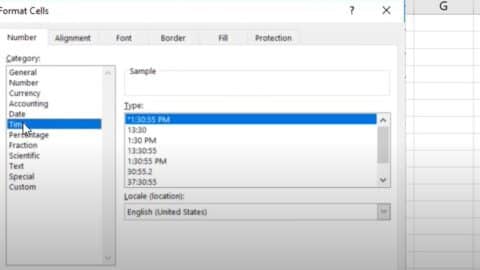Excel Add Months to Date: How to Do It Easily
Are you looking to add months to a date in Excel? If so, you’re in the right place! This guide will walk you through the steps to add or subtract any number of months from a date in Excel. Whether you’re a beginner or an experienced Excel user, this guide has everything you need to know.
Table of Contents
Introduction
Excel is a powerful tool that allows you to perform complex calculations and data analysis with ease. One of the most common tasks in Excel is adding or subtracting dates. However, adding months to a date can be a bit tricky. Fortunately, Excel has a built-in function that makes it easy to add months to a date.
Excel Add Months to Date: What You Need to Know
Before we dive into the steps to add months to a date in Excel, there are a few things you should know. Here are some key points to keep in mind:
- Excel stores dates as serial numbers, with January 1, 1900, as the base date (serial number 1).
- Excel recognizes dates in a variety of formats, including MM/DD/YYYY and DD/MM/YYYY.
- When you add or subtract months from a date, Excel adjusts the day accordingly. For example, if you add one month to January 31st, the result will be February 28th (or February 29th in a leap year).
- The Excel function we’ll be using to add months to a date is called EDATE.
How to Add Months to a Date in Excel
Now that you know the basics, let’s get started with adding months to a date in Excel.
Step 1: Enter the Date
The first step is to enter the date you want to add months to in a cell. For this example, we’ll use the date January 1, 2022, which we’ll enter in cell A1.
Step 2: Enter the Number of Months to Add
Next, enter the number of months you want to add in a separate cell. For this example, we’ll add 3 months, which we’ll enter in cell B1.
Step 3: Use the EDATE Function
Now that we have our date and the number of months we want to add, we can use the EDATE function to add the months. Here’s the formula:
=EDATE(A1,B1)
This formula tells Excel to add the number of months in cell B1 to the date in cell A1. The result will be a new date that is 3 months after January 1, 2022.
Step 4: Format the Cell as a Date
By default, the result of the EDATE function will be a serial number that represents the new date. To display the new date in a more readable format, you’ll need to format the cell as a date. Here’s how:
- Select the cell with the EDATE formula.
- Right-click and select Format Cells from the context menu.
- In the Format Cells dialog box, select the Date category.
- Choose a date format that you prefer.
- Click OK to close the dialog box.
FAQs
Q: Can I subtract months from a date in Excel?
A: Yes, you can use the EDATE function to subtract months from a date. Simply enter a negative number of months in the formula, like this:
=EDATE(A1,-3)
This formula will subtract 3 months from the date in cell A1.
Q: Can I add fractional months to a date in Excel?
A: Yes, you can use decimal values in the EDATE function to add fractional months to a date. For example, if you want to add 0.5 months to a date, you can enter the following formula:
=EDATE(A1,0.5)
This formula will add half a month to the date in cell A1.
Q: What happens if I add months to a date that is at the end of a month?
A: If you add months to a date that is at the end of a month, Excel will adjust the day accordingly. For example, if you add one month to January 31st, the result will be February 28th (or February 29th in a leap year).
Q: Can I add months to a date using a formula without using the EDATE function?
A: Yes, you can use a formula to add months to a date without using the EDATE function. One way to do this is by using the DATE function. Here’s an example:
=DATE(YEAR(A1),MONTH(A1)+B1,DAY(A1))
This formula adds the number of months in cell B1 to the month of the date in cell A1, while keeping the day and year the same.
Q: Can I add months to a date using a keyboard shortcut?
A: Yes, you can use a keyboard shortcut to add months to a date. Here’s how:
- Select the cell with the date you want to add months to.
- Press the “=” key on your keyboard to start a formula.
- Type “EDATE(” and select the cell with the date you want to add months to.
- Type a comma (“,”) and select the cell with the number of months you want to add.
- Type “)” and press Enter.
Q: Can I use the EDATE function to add years to a date?
A: No, the EDATE function is specifically designed to add or subtract months from a date. If you want to add or subtract years from a date, you can use the DATE function instead. Here’s an example:
=DATE(YEAR(A1)+1,MONTH(A1),DAY(A1))
This formula adds one year to the year of the date in cell A1, while keeping the month and day the same.
Conclusion
Adding months to a date in Excel is a common task that can be accomplished with ease using the EDATE function. By following the steps outlined in this guide, you can quickly and easily add any number of months to a date in Excel. Whether you’re working with dates for personal or professional purposes, knowing how to add months to a date is essential for any Excel user.
So, next time you need to add or subtract months from a date in Excel, don’t worry! Just follow these simple steps, and you’ll be done in no time.
Hello, I’m Cansu, a professional dedicated to creating Excel tutorials, specifically catering to the needs of B2B professionals. With a passion for data analysis and a deep understanding of Microsoft Excel, I have built a reputation for providing comprehensive and user-friendly tutorials that empower businesses to harness the full potential of this powerful software.
I have always been fascinated by the intricate world of numbers and the ability of Excel to transform raw data into meaningful insights. Throughout my career, I have honed my data manipulation, visualization, and automation skills, enabling me to streamline complex processes and drive efficiency in various industries.
As a B2B specialist, I recognize the unique challenges that professionals face when managing and analyzing large volumes of data. With this understanding, I create tutorials tailored to businesses’ specific needs, offering practical solutions to enhance productivity, improve decision-making, and optimize workflows.
My tutorials cover various topics, including advanced formulas and functions, data modeling, pivot tables, macros, and data visualization techniques. I strive to explain complex concepts in a clear and accessible manner, ensuring that even those with limited Excel experience can grasp the concepts and apply them effectively in their work.
In addition to my tutorial work, I actively engage with the Excel community through workshops, webinars, and online forums. I believe in the power of knowledge sharing and collaborative learning, and I am committed to helping professionals unlock their full potential by mastering Excel.
With a strong track record of success and a growing community of satisfied learners, I continue to expand my repertoire of Excel tutorials, keeping up with the latest advancements and features in the software. I aim to empower businesses with the skills and tools they need to thrive in today’s data-driven world.
Suppose you are a B2B professional looking to enhance your Excel skills or a business seeking to improve data management practices. In that case, I invite you to join me on this journey of exploration and mastery. Let’s unlock the true potential of Excel together!
https://www.linkedin.com/in/cansuaydinim/










